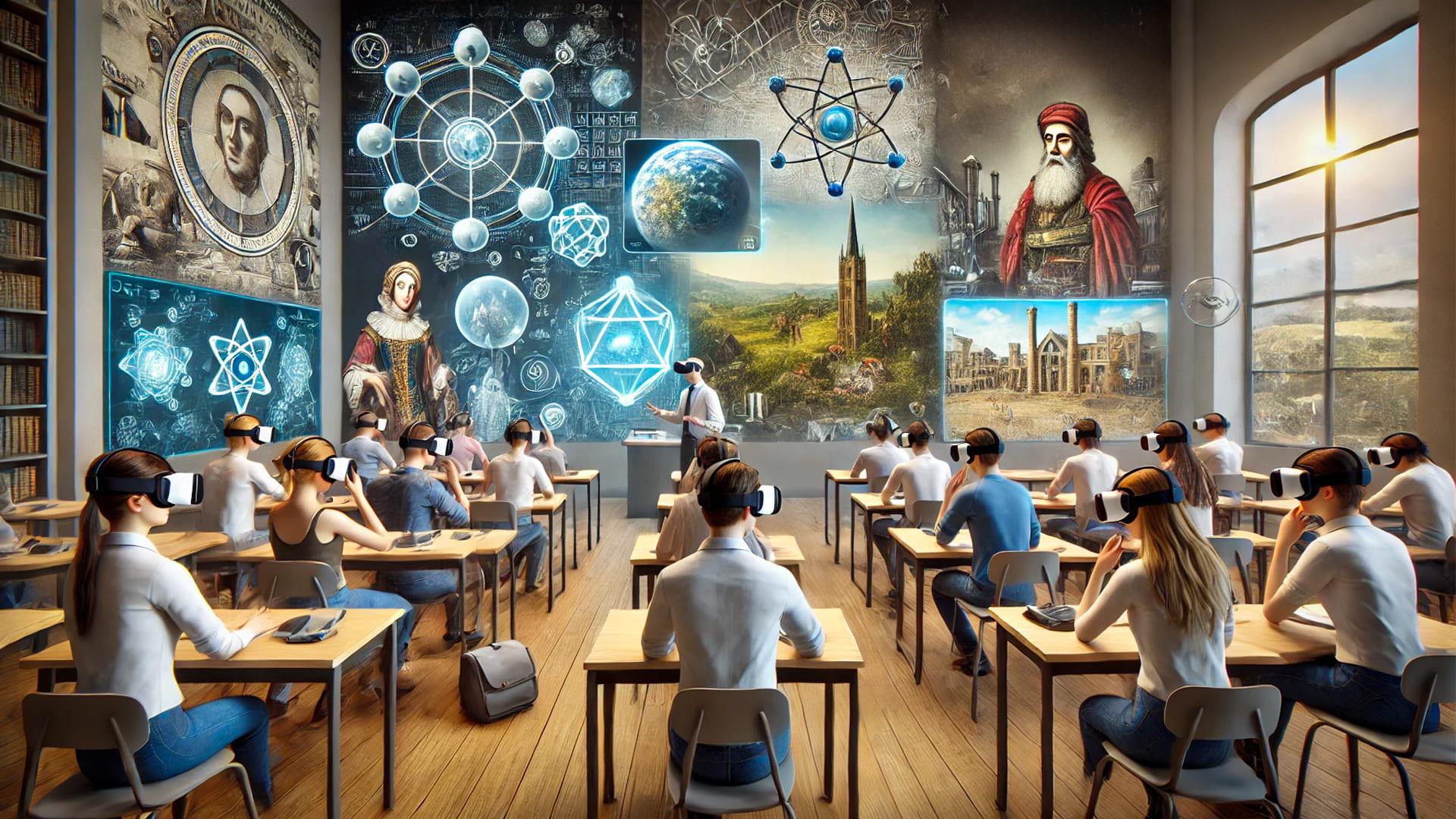Revolutionizing Education: How VR/AR Drive Immersive Learning in Today’s Classrooms
Education has always evolved alongside technological advancements. Today, Virtual Reality (VR) and Augmented Reality (AR) are at the forefront, reshaping how students learn and teachers deliver content. With immersive experiences that engage multiple senses and bridge the gap between abstract concepts and real-world application, VR and AR in education are driving student engagement, knowledge retention, and equitable learning opportunities. In this article, we’ll delve into the transformative impact of VR/AR, explore benefits, examine real-world case studies, and offer practical tips to leverage immersive learning in your classroom.
what Are VR and AR? Understanding the Basics
Before diving into the impact on education, let’s clarify the difference:
- Virtual Reality (VR) fully immerses users in a simulated surroundings, often through a headset.
- Augmented Reality (AR) overlays digital elements onto the real world, typically using smartphones or tablets.
Both technologies expand the boundaries of traditional classrooms, making experiential learning possible anywhere, anytime.
Key Benefits of VR/AR in Education
Implementing VR and AR in classrooms delivers profound advantages for students and educators:
- Increased engagement and motivation: Interactive 3D models, virtual field trips, and realistic simulations captivate students’ attention far more than textbooks or slides.
- Enhanced knowledge retention: Immersive learning facilitates deeper understanding and long-term memory by involving multiple senses.
- Safe, accessible exploration: VR allows students to conduct scientific experiments, explore historical events, or visit distant planets without safety risks or travel costs.
- personalized learning experiences: AR apps can adjust to individual learning styles and pace, catering to diverse classroom needs.
- Collaboration and problem-solving: Group activities in virtual environments foster teamwork and critical thinking skills.
- Inclusive learning: Students with disabilities can access tailor-made VR/AR content, leveling the educational playing field.
How VR and AR are Transforming Classrooms
Immersive science Labs and Field Trips
With VR simulations, students can manipulate molecules, witness chemical reactions, or dissect digital frogs—no labs or safety equipment necessary. AR brings science off the page, letting students interact with virtual cells or examine 3D replicas of volcanoes atop their desks.
Interactive History and Social Studies Lessons
History comes alive as students “walk” through ancient cities, battlefields, or meaningful historical moments. AR apps overlay artifacts and timelines onto the real world, making abstract dates and names tangible through visual context and firsthand exploration.
Language Learning through conversation
With VR/AR, language classes transcend rote memorization. students can practice real-life conversations with virtual natives, see objects labeled in target languages, or navigate foreign cities through gamified apps—quickly building fluency and confidence.
Accessible Arts and Creativity
VR painting suites and AR music trainers offer aspiring artists and musicians first-hand practice with feedback. Students experiment with colors, shapes, and sound in environments where mistakes are safe and creativity is boundless.
Case Studies: VR/AR Success Stories in Education
case Study 1: Google Expeditions transforms Geography Lessons
google Expeditions, a popular VR education platform, enables students to embark on over 900 virtual field trips—from climbing Mount Everest to swimming with sharks. Teachers report improved engagement and geographic understanding,especially among visual learners.
Case Study 2: Medical Training with VR at Case Western Reserve University
Case Western’s partnership with Microsoft HoloLens brought mixed reality to med school classrooms. Students navigate 3D holograms of the human body, visually grasping organs’ functions and relations—drastically improving learning outcomes versus textbook study.
Case Study 3: AR in Primary Education—SkyView App
SkyView, an AR astronomy app, helps young learners identify stars, planets, and constellations by simply pointing a device at the night sky. Teachers notice noticeable enthusiasm for science and a deeper understanding of astronomy concepts.
First-hand Experiences: How VR/AR Makes Learning Exciting
“Using VR headsets in my high school biology class was a game-changer. Dissecting a frog virtually was not only more accessible for everyone, but it also allowed us to redo steps and learn from mistakes—something we could never do with real specimens.”
“Our students lit up when we introduced AR flashcards for vocabulary. They started competing to see who could find and define more words, turning what used to be a boring exercise into a lively classroom game.”
overcoming Challenges: Practical Tips for Schools
While the advantages are clear, integrating VR/AR in education requires thoughtful planning. Here are practical tips for successful adoption:
- Start small: Pilot with one class or subject before scaling. Free or low-cost AR apps are a great entry point.
- Train educators: Invest in teacher professional development. Familiarity breeds confidence and creative lesson planning.
- Choose curriculum-aligned platforms: Seek out VR/AR content that aligns with learning objectives and standards.
- Consider device access: VR headsets can be expensive, but smartphone-based VR or AR apps offer affordable alternatives. Some platforms,like Merge Cube,partner with schools for cost-effective solutions.
- Ensure safe usage: Establish clear policies on device hygiene, screen time, and student privacy.
- Encourage feedback and iteration: Gather input from students and educators to refine your approach and maximize impact.
The Future of Immersive Learning: What’s Next?
The pace of technological innovation suggests VR and AR in education will only become more prevalent and accessible. Emerging trends include:
- Cloud-based VR collaboration: Remote classes and global projects through shared virtual spaces.
- AI-powered adaptive learning: Personalized lessons that respond to students’ progress in real-time.
- Greater inclusivity: Tools tailored for students with special needs, language differences, or social anxieties.
- Expanded content libraries: More subjects, languages, and age groups covered with cultural sensitivity and curriculum alignment.
Conclusion: Embrace the Educational Revolution with VR/AR
VR and AR are not futuristic luxuries—they are practical, powerful tools available today to ignite student curiosity, foster lifelong learning, and prepare students for a tech-driven world. By embracing immersive learning in classrooms, educators and schools position themselves at the cutting edge of education, unlocking new potentials for every student.
Are you ready to revolutionize your classroom? Start exploring VR/AR tools tailored for education and witness firsthand how immersive learning can transform your teaching and your students’ success stories.

